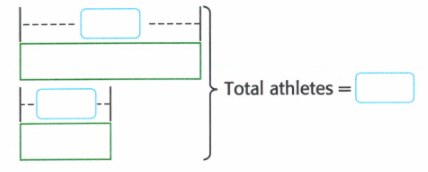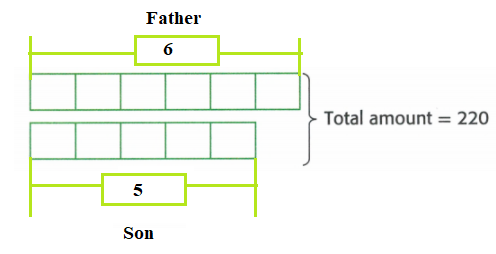Glencoe Math Course 2 Volume 1 Common Core Chapter 1 Ratios and Proportional Reasoning
Page 3 Exercise 1 Problem 1
Let the two ratios be a:b and c:d
If both the ratios are equal a:b = c:d
Then the given ratio is said to be in proportion.
Furthermore, if the sets fluctuate in the same proportion, the ratio is indeed in proportion.
In terms of objects, if two objects have the same form but different sizes, they are perhaps the same shape but different sizes.
For instance, suppose the two objects are spheres, but one is smaller and the other is larger.
Despite the fact that the sizes differ, the corresponding angles would be the same.
As a result, their ratios are proportional.
As a result, the two objects are proportional.
When two objects have the same form, same angles, but various sizes, they all seem to be in proportion. As a result, their ratios are proportional.
Page 6 Exercise 1 Problem 2
Given: On a seventh-grade field trip.
The number of students who went on that trip is 180.
The number of adults who went on that trip is 24.
The number of buses in which they went is 4.
We need to write the ratio of adults: Students as a fraction and in its simplest form.
The number of adults = 24
The number of students = 180
The ratio of adults: Students in its simplest form is given by
Adults: Students = 24:180
\(\frac{\text { Adults }}{\text { Students }}=\frac{24}{180}\)
=\(\frac{2}{15}\)
The ratio of adults: Students as a fraction in the simplest form is \(\frac{2}{15}\)
Page 6 Exercise 2 Problem 3
Given: In a seventh-grade field trip.
The number of students who went on that trip is 180.
The number of adults who went on that trip is 24.
The number of buses in which they went is 4.
We need to write the ratio of the students: Buses as a fraction and in its simplest form.
The number of buses = 4
The number of students = 180
The ratio of students: Buses in its simplest form is given by
Students : Buses = 180:4
\(\frac{\text {Students}}{\text { Buses}}=\frac{180}{4}\)
=\(\frac{45}{1}\)
The ratio of students: buses as a fraction in the simplest form is \(\frac{45}{1}\)
Page 6 Exercise 3 Problem 4
Given: in a seventh-grade field trip.
The number of students who went on that trip is 180.
The number of adults who went on that trip is 24.
The number of buses in which they went is 4.
We need to write the ratio of the buses: People as a fraction and in its simplest form.
The number of adults = 24
The number of students = 180
The number of buses = 4
The total number of people on the bus = Adults + Students
= 24 + 180
= 204
The total number of people on the bus = 204
The ratio of buses: People in its simplest form is given by
Buses: People = 4:204
\(\frac{\text {Buses}}{\text { People}}=\frac{4}{204}\)
= \(\frac{1}{51}\)
The ratio of buses: People as a fraction in the simplest form is \(\frac{1}{51}\)
Page 6 Exercise 5 Problem 5
Given:
12 out of 20 doctors agree
15 out of 30 doctors agree
We need to determine their ratios and to check whether the ratios are equivalent.
Writing the given ratios in their simplest form.
12 out of 20 doctors agree The ratio is
= \(\frac{12}{20}\)
= \(\frac{6}{10}\)
= \(\frac{3}{5}\)
15 out of 30 doctors agree The ratio is
= \(\frac{15}{30}\)
= \(\frac{1}{2}\)
Both the ratios are simplified to different fractions.
Thus, both ratios are not equivalent.
The ratios are not equivalent.
Page 8 Exercise 1 Problem 6
Given: The ratio of the number of boys to the number of girls on the swim team is 4:2.
The total number of people on the swim team is 24 athletes.
We need to determine how many more boys than girls are there on the team.
Also, use the given bar diagram to solve.

Given: The ratio is 4:2
The total number of boys and girls is 24
The obtained bar diagram is

Let each part of the ratio be x
Thus, the equation becomes
4x + 2x = 24
Solving the equation, we get
4x + 2x = 24
6x = 24
x = \(\frac{24}{6}\)
x = 4
The total number of Boys will be
4x = 4 × 4
= 16
The total number of Girls will be
2x = 2 × 4
= 8
Determining how many more boys than girls are there on the team, we get
16 − 8 = 8
Thus, 8 boys are more on the swim team than the girls.
8 more boys than girls are there on the team.
Page 8 Exercise 3 Problem 7
We are given a bar diagram.
We must write a real-world problem that could be represented by the bar diagram and also to solve it.
The bar diagram is as follows

The given bar diagram is

The number of parts given is 6 and 5
Therefore, the ratio will be 6:5
The total amount given is 220.
Thus, the real-world problem for the given bar diagram will be.
The ratio of the expenses shared by the father and the son is 6:5.
The total amount shared by them will be 220.
We need to determine how much amount is shared by them both.
The bar diagram will be

Writing an equation using the obtained ratio and the total amount to solve this, we get
6x + 5x = 220
11x = 220
x = \(\frac{220}{11}\)
x = 20
Thus, each part represents the amount of 20.
The expense amount shared by the father is
6x=6×20=120
The expense amount shared by the son is
5x = 5×20 = 100
A real-world problem that could be represented by the given bar diagram is.
The ratio of the expenses shared by the father and the son is 6:5.
The total amount shared by them will be 220.
Determine how much expense amount is shared by them both.
The corresponding bar diagram will be.

On solving the problem, we get the expense shared by the father is 120 and by the son is 100
Page 8 Exercise 4 Problem 8
Consider a real-world problem.
Let the bar diagram given for that particular real-world problem be.

Count the number of parts in each case to determine the ratio corresponding to it.
Here, the number of parts is 6 and 5.
Therefore, the ratio given will be 6:5
The total amount corresponding to the given ratio is 220.
Thus, for solving the given ratio, we need to take the total number of parts given and the total amount represented in the bar diagram.
Thus, the equation will be
6x + 5x = 220
11x = 220
x=220/11
x = 20
We can use a bar diagram to obtain the ratios of each part and the total amount represented by the real-world problem to solve it.
